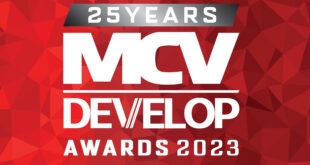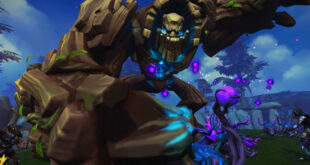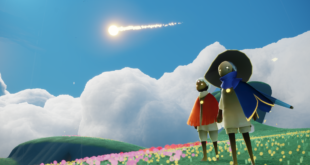30years ago, Roger Hulley was approached by two men who wanted to publish their game.
The year before, Hulley had moved out of the music industry to work at UK games distribution firm R&R, but with this title he was being pitched, he decided to set up his own games label.
Those two men were Martyn Brown, who would go on to found Team 17, and Mick Robinson.
The title was a Spectrum platformer called Henry’s Hoard, and it was the first title published by Hulley’s own games firm – Alternative Software.
They were having difficulty getting it out into the market place so I basically bought the title, the stock and the name and thought: ‘what am I going to do next?’,” Hulley says.
I then started looking out for other products to put out on the label as well.
"I came from the record industrybefore that. I used to love the idea of having a hit record – of course, I wasn’t going to get that myself – but I just liked the idea of being able to publish a game, seeing it go into the charts and so on. That’s what inspired me to get started.”
He continues: In the early days we were buying people’s back catalogue. I bought games off Creative Spark, Mikro-Gen and Activision. So we were going into the marketplace and acquiring titles that way, as well as actually going out and getting indie developers on board.
"We were always very indie-friendly; we wanted to source games which really needed an expert hand to steer them through the market place.”
"By 1990 we had a 17 per cent market share of the budget games sector."
Roger Hulley, Alternative Software
By 1988, Alternative had started developing its own games, and in 1989 it launched a string of licensed kids products.
We had games based on Postman Pat, Thomas the Tank Engine and Sooty and Sweep – those characters sold phenomenally well,” Hulley says.
It was my thinking at the time – having a little family – that there were no real children’s games available that were retailed at the right price point. So the public was going out to buy a game for their child and had to spend 10.
"Parents are going to cough and splutter at that price – in those days it was a huge amount. So we brought out children’s games at a sensible price point. We targeted 1.99 and figured we’d get people picking up those titles much quicker. Parents thought that if their kids didn’t like it, they had only lost 1.99 not 10. It was a good spend.”
Alternative has seen its fair share of success during its 30 years. At one point the firm constituted a decent section of the budget games market.
Titles like Postman Pat and big games like Thomas the Tank Engine, Sooty and Sweep, football games like Soccer Boss, Tracksuit Manager, eventually Dalek Attack and Yogi Bear – they all sold very well,” Hulley recalls.
In 1990 we had 17 per cent of the budget market. By volume we were really moving units through. We are obviously much smaller now in terms of market share, but our turnover is good.
And just this September, we had Rugby League Live 3 reach No.9 in the Top 40. That was fantastic.
"But things have changed – we are no longer a volume publisher, we’re quite selective in what we put out and we are obviously developing most of our own games today as well as publishing and distributing other peoples’ titles.”
Of course, the games market has changed beyond recognition in the last 30 years. Back when Hulley started publishing games, they were on cassette tapes – a far cry from our modern infrastructure of discs and digital downloads.
The biggest change was in about 1993 when 8-bit was suddenly killed overnight,” Hulley recalls.
In those days the market place was dominated by Spectrum, Commodore and Amstrad games, on cassette of course. We actually purchased a cassette duplication plant at that time because we were moving that amount of volume. What happened was WH Smiths decided it didn’t want to stock 8-bit anymore and then other retailers followed suit. That whole market died very, very quickly. We were set up at that particular stage in time to do much more. We were just developing 16-bit games and bringing a few through, but we didn’t have any volume. That was a major event for us.
The advent of console games, when they started coming through – the Master System, Mega Drive etcetera – really started biting into the market. Prior to that, there had been the Atari VCS2600 and Intellivision, but home computer games had really taken off in the UK in particular. When Sega came into the show with the Master System and Mega Drive, the market place changed dramatically.”
Today, Alternative Software continues to support the console space. But Hulley says he’ll be keeping his options open for the next 30 years.
He concludes: Going forwards, I hope Alternative will keep producing products that are relevant to the market place at that particular stage in time.”
PRINT ISN’T DEAD
Alternative’s success hasn’t just been in games.
In 1989, it made a graphics package, allowing users to produce printed cards, invitations and other media decorated with licensed IP.
We’ve adapted our graphics packages for Thomas the Tank Engine. And we created electronic paint and create products,” founder Roger Hulley says.
We stayed with that product and enhanced it and improved the print engine. We produce some of the best interactive print software in the world – so much so that manufacturers like Canon, HP, Dell and Epson all use our software. Recently we did a Harry Potter activity print studio for Canon. For Epson, we did a Man United one. For Dell we did Spider-Man.
"We basically worked on the engine and kept it going. We now produce the best print studios in the world.”

 MCV/DEVELOP News, events, research and jobs from the games industry
MCV/DEVELOP News, events, research and jobs from the games industry



